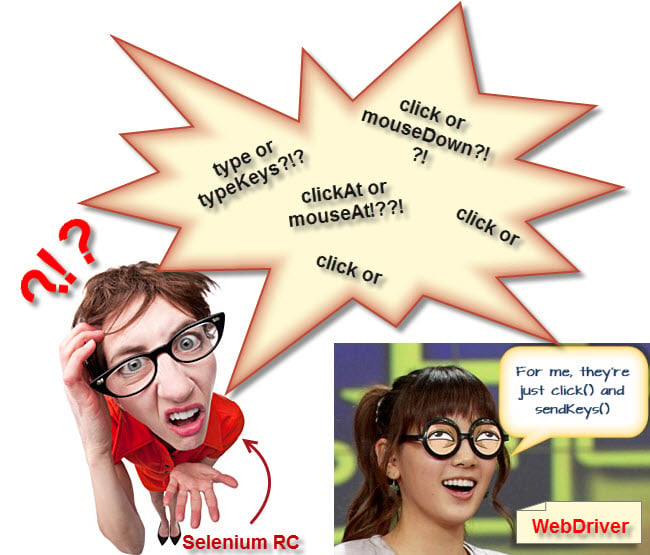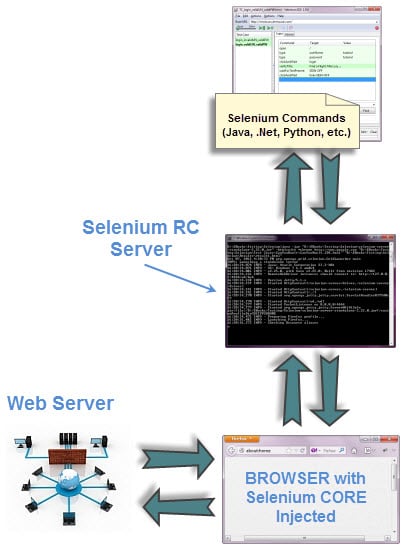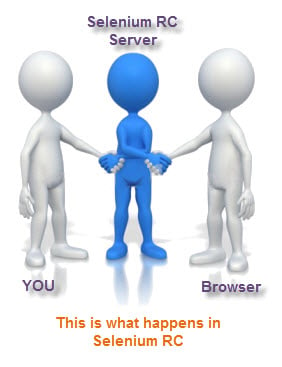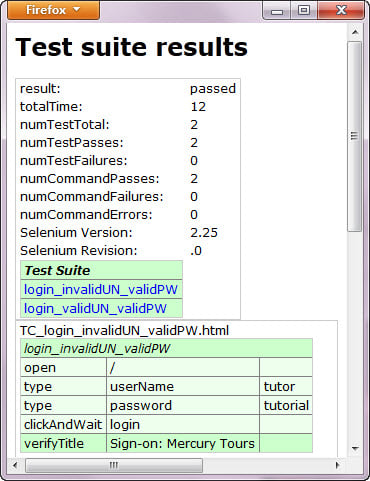Users Online
· Members Online: 0
· Total Members: 188
· Newest Member: meenachowdary055
Forum Threads
Latest Articles
Articles Hierarchy
Selenium Tutorial for Beginners:
What is Selenium WebDriver? Difference with RC
What is WebDriver?
WebDriver is a web automation framework that allows you to execute your tests against different browsers, not just Firefox, Chrome (unlike Selenium IDE).
WebDriver also enables you to use a programming language in creating your test scripts (not possible in Selenium IDE).
You can now use conditional operations like if-then-else or switch-case. You can also perform looping like do-while.
Following programming languages are supported by WebDriver
- Java
- .Net
- PHP
- Python
- Perl
- Ruby
You do not have to know all of them. You just need to be knowledgeable in one. However, in this tutorial, we will be using Java with Eclipse as our IDE.
Difference between Selenium RC and Webdriver
Before the advent of WebDriver in 2006, there was another, automation tool called Selenium Remote Control. Both WebDriver and Selenium RC have following features:
- They both allow you to use a programming language in designing your test scripts.
- They both allow you to run your tests against different browsers.
So how do they differ? Let us discuss the answers.
1. Architecture
WebDriver's architecture is simpler than Selenium RC's.
- It controls the browser from the OS level
- All you need are your programming language's IDE (which contains your Selenium commands) and a browser.
Selenium RC's architecture is way more complicated.
- You first need to launch a separate application called Selenium Remote Control (RC) Server before you can start testing
- The Selenium RC Server acts as a "middleman" between your Selenium commands and your browser
- When you begin testing, Selenium RC Server "injects" a Javascript program called Selenium Core into the browser.
- Once injected, Selenium Core will start receiving instructions relayed by the RC Server from your test program.
- When the instructions are received, Selenium Core will execute them as Javascript commands.
- The browser will obey the instructions of Selenium Core and will relay its response to the RC Server.
- The RC Server will receive the response of the browser and then display the results to you.
- RC Server will fetch the next instruction from your test script to repeat the whole cycle.
2. Speed
WebDriver is faster than Selenium RC since it speaks directly to the browser uses the browser's own engine to control it.
Selenium RC is slower since it uses a Javascript program called Selenium Core. This Selenium Core is the one that directly controls the browser, not you.
3. Real-life Interaction
WebDriver interacts with page elements in a more realistic way. For example, if you have a disabled text box on a page you were testing, WebDriver really cannot enter any value in it just as how a real person cannot.
Selenium Core, just like other JavaScript codes, can access disabled elements. In the past, Selenium testers complain that Selenium Core was able to enter values to a disabled text box in their tests. Differences in API
4. API

Selenium RC's API is more matured but contains redundancies and often confusing commands. For example, most of the time, testers are confused whether to use type or typeKeys; or whether to use click, mouseDown, or mouseDownAt. Worse, different browsers interpret each of these commands in different ways too!
WebDriver's API is simpler than Selenium RC's. It does not contain redundant and confusing commands.
5. Browser Support
WebDriver can support the headless HtmlUnit browser
HtmlUnit is termed as "headless" because it is an invisible browser - it is GUI-less.
It is a very fast browser because no time is spent in waiting for page elements to load. This accelerates your test execution cycles.
Since it is invisible to the user, it can only be controlled through automated means.
Selenium RC cannot support the headless HtmlUnit browser. It needs a real, visible browser to operate on.
Limitations of WebDriver
WebDriver Cannot Readily Support New Browsers
Remember that WebDriver operates on the OS level. Also, remember that different browsers communicate with the OS in different ways. If a new browser comes out, it may have a different process of communicating with the OS as compared to other browsers. So, you have to give the WebDriver team quite some time to figure that new process out before they can implement it on the next WebDriver release.
However, it is up to the WebDriver's team of developers to decide if they should support the new browser or not.
Selenium RC Has Built-In Test Result Generator
Selenium RC automatically generates an HTML file of test results. The format of the report was pre-set by RC itself. Take a look at an example of this report below.
WebDriver has no built-in command that automatically generates a Test Results File. You would have to rely on your IDE's output window, or design the report yourself using the capabilities of your programming language and store it as text, HTML, etc.
Summary
- WebDriver is a tool for testing web applications across different browsers using different programming languages.
- You are now able to make powerful tests because WebDriver allows you to use a programming language of your choice in designing your tests.
- WebDriver is faster than Selenium RC because of its simpler architecture.
- WebDriver directly talks to the browser while Selenium RC needs the help of the RC Server in order to do so.
- WebDriver's API is more concise than Selenium RC's.
- WebDriver can support HtmlUnit while Selenium RC cannot.
- The only drawbacks of WebDriver are:
- It cannot readily support new browsers, but Selenium RC can.
- It does not have a built-in command for automatic generation of test results.

.jpg)








